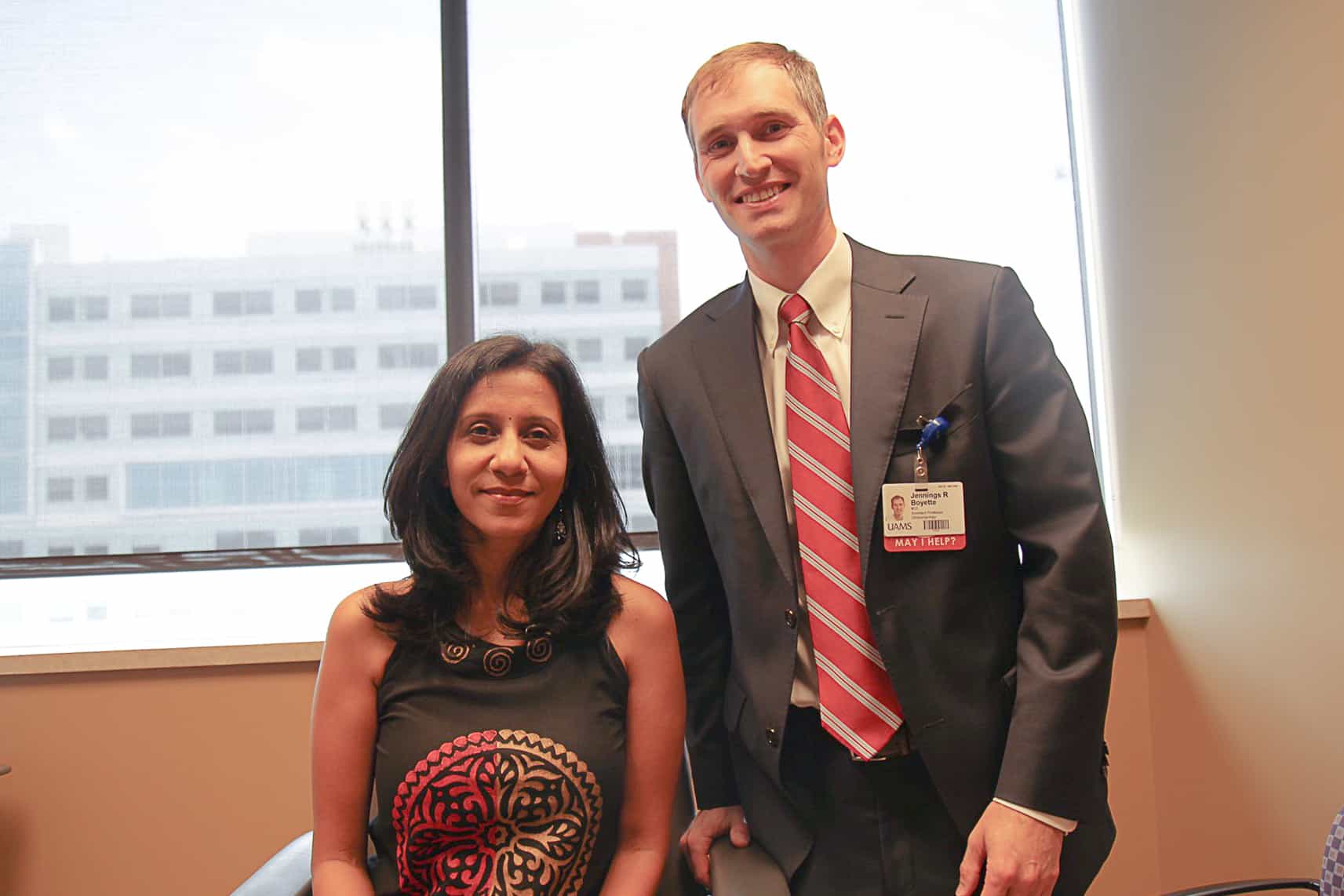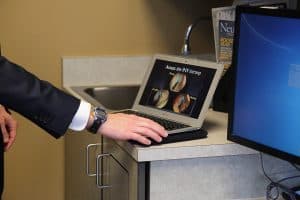Functional Rhinoplasty Helps Patient to Breathe Freely
| Nov. 3, 2016 | For the first time in nine years, Sangeetha Anand can breathe easy.
And she’s giving all the credit to Jennings Boyette, M.D., assistant professor of facial plastic and reconstructive surgery in the UAMS College of Medicine.
Boyette was able to successfully diagnose and correct what had become a years-long battle for air that started a year after Anand moved to Arkansas from India.
“I used to struggle for every breath that I took,” she said. “It felt like my nose was stuffed but there is no mucus. It was dry and very difficult to let air through.”
She dealt with chronic sneezing and coughing every day throughout the day. She saw several health care professionals to try to pinpoint the problem.

Jennings Boyette, M.D., assistant professor of facial plastic and reconstructive surgery in the UAMS College of Medicine.
“I had appointments with a pulmonologist, a gastroenterologist, an otolaryngologist,” she said. “They did a bronchoscopy, a CT scan of my sinus and my lungs. I had allergy testing, asthma testing, TB skin testing, acid reflux testing, basically anything you can think of.”
All the tests turned out negative. In 2010, her breathing problems worsened. She was unable to breathe freely through her nose when she lied down. She started wearing nasal strips to bed.
In 2011, an otolaryngologist told her she had a deviated septum. So she had a surgical procedure called a septoplasty to straighten the partition separating the two chambers between her nostrils.
“I was okay for two months, but the problems started again! This time I could not breathe freely even during the daytime.”
Anand says exercise helped. But it was only temporary.
“When I was running, I could breathe. For two hours it felt great. Then I would feel congested again.”
Anand was taking several medications for relief including nasal sprays, decongestant pills and the nasal strips. In 2015, she met Boyette.
“There are lots of reasons a person may feel congested or unable to breathe through their nose,” Boyette said. “They can be allergy related, but those things tend to come and go. A problem like Anand’s is due to structural reasons and the struggle to breathe does not come and go with seasons like allergies do.”
During her consultation, Boyette says he looked carefully at the anatomy of Anand’s nose and the different components that could cause her to have such difficulty breathing. He found she had internal valve stenosis, or narrowing of the valve, that blocked air flow.
The internal nasal valve is usually located in the narrowest part of a person’s nose. Anand’s was abnormally narrow. This problem was separate from her deviated septum. Boyette said the septoplasty alone was not enough to help her breathe freely.
“The success of the surgery is very much dependent on how the patient feels afterward,” Boyette said. “We look at that as well as some objective measures to see how much airflow they’re actually getting.”
To increase airflow, Boyette and his team had to take Anand’s nose apart and widen the middle. He was able to do that without changing her appearance.
“There’s some trepidation about having functional rhinoplasty because some patients do not want to look different,” Boyette said. “I’m here to reassure them that we’re able to accomplish these techniques without changing their facial structure.”
“From the day he operated on me, I was able to breathe. I feel like I can lead a normal life. I’m very grateful for Dr. Boyette.”

